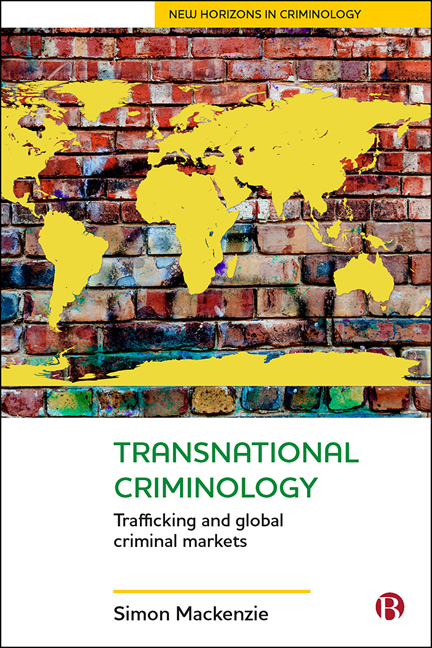Book contents
6 - Arms Trafficking
Published online by Cambridge University Press: 25 February 2021
Summary
The nature and extent of the harm
Arms trafficking is the transfer of weapons in breach of national or international laws and conventions where they prohibit such transfer. Arms trafficking supplies weapons to criminals and to regions in conflict. The economic value of the illicit trade in arms has been estimated as somewhere between $170 million and $320 million (Leggett 2019, using 2006 figures), making the market for illegal guns many shades less valuable than the other criminal trades covered in this book. However, while the types and levels of non-economic harms in markets for consumer or collector commodities such as drugs or antiquities can be argued about, the direct and violent harms caused by the global movement of illegal arms is clear enough. Anthony Sampson, author of the major journalistic account of what he called The Arms Bazaar, summarizes in the introduction to the book the underpinning reality of a commercial arms fair he visited: ‘there was no room for misunderstanding: the real point is to kill’ (Sampson 1977: 13).
To the extent that arms trafficking facilitates the militarization of undemocratic political regimes it supports authoritarianism and dictatorship, and arms trafficking is therefore directly responsible when civilian populations are persecuted by the iron fists of the generals implementing the direction of a hard-line administration (Myrdal 1977). We begin to see, then, that arms trafficking and the violence it supports can have consequential effects that reach far beyond just the deaths and injuries directly caused by the weapons that have been traded. Efrat summarizes some of the relevant harms in the literature:
Widespread gun violence inflicts various social and economic costs, including medical treatment, refugee flows, destruction of physical infrastructure, losses in productivity and foreign investment, political instability, trade obstruction, as well as disruption of health care and education. Small arms are widely used for terrorism, organized crime and gang warfare. They also facilitate a large spectrum of human rights violations including killing, rape, and torture. (Efrat 2010: 98)
It has been noted that among the panoply of illegal markets, including those few that are covered in this book, firearms have a ‘transcending quality’ (Morselli 2012: 130; Koper and Reuter 1996).
- Type
- Chapter
- Information
- Transnational CriminologyTrafficking and Global Criminal Markets, pp. 89 - 104Publisher: Bristol University PressPrint publication year: 2020

